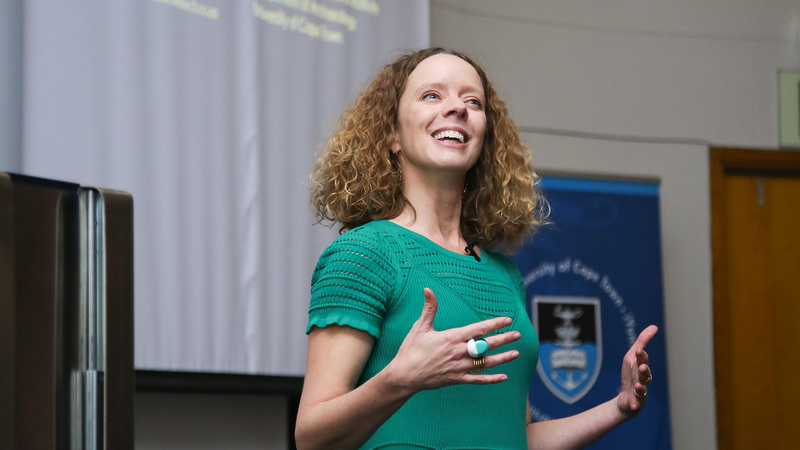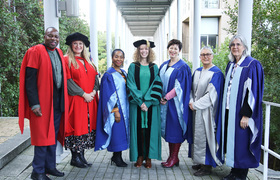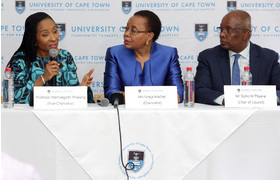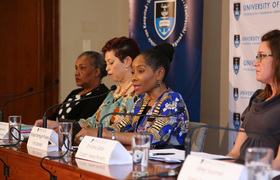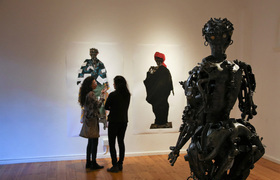Rattling conventional thinking on evolution
19 August 2019 | Story Helen Swingler. Photos Je’nine May. Read time 9 min.Look at the people around you. Notice their hair, eye shape and colour, their skin tone, body shape, foot size, nose shape. Why is it that although humans share common traits, we are also individual and diverse?
This diversity is represented everywhere: in classrooms, office spaces, book clubs, stokvels and study groups. Each is a small subset of diversity, just like the audience at her inaugural lecture, said University of Cape Town (UCT) Professor Rebecca Rogers Ackermann.
A biological anthropologist and palaeoanthropologist in the Department of Archaeology, Ackermann was appointed as a professor in 2018. Her inaugural lecture, “The evolution of human diversity: The relative roles of chance, adaptation and ancient sex”, examined evidence in the fossil record to provide perspective on these and other issues.
The wide range of physical variation seen across humans is unusual for primates. The study of this diversity has been at the heart of Ackermann’s work for more than 20 years. She studies the circular system: how evolution creates variation, and how variation fuels evolution.
Unusual diversity
Human evolution has traditionally been represented in a linear fashion, or as a single line that can be traced through a branching tree, ultimately tracking the evolution of our species from an ape-like creature to Homo sapiens in Africa a few hundred thousand years ago.
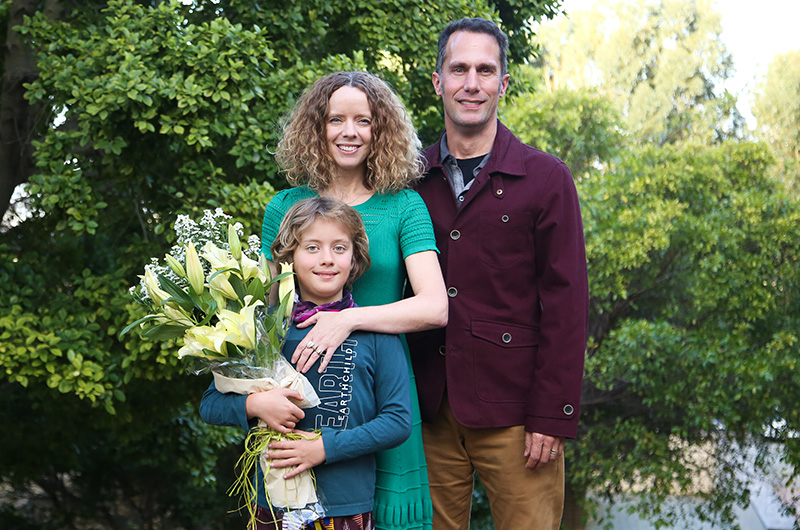
“Other branches either go extinct before we evolve, or soon after through replacement. This linear narrative, with the final replacement of all archaic groups with Homo sapiens, doesn’t explain the huge diversity in the single living product of this evolution – us.”
While selection played a part in our evolution over the past four million years, said Ackermann, other evolutionary processes have been largely ignored.
Genetic drift and gene flow can be equally powerful evolutionary forces.
“We know from other organisms that these two evolutionary forces can play important roles in producing new forms, including unique and complex forms, and including new species,” she explained.
“This is where my research and that of others has radically changed the way we think about human evolution.”
Ackermann’s focus in the fossil record has been on the last four million years, and especially the diverse genus Homo that originated 2.8 million years ago and continues to the present, as us.
She has shown that genetic drift is a major player in evolution and is responsible for the majority (90%) of skull variation across Homo. It drove diversification in our lineage at crucial time periods.
Genetic drift and gene flow
“Drift results in the divergence of separated groups by chance, and because genetic change underlies morphological change in many cases, this means that what groups look like can also diverge – also due to chance.
“We also know from studying all sorts of organisms that drift is particularly powerful in small, mobile communities.”
“We also know from studying all sorts of organisms that drift is particularly powerful in small, mobile communities.”
Gene flow occurs when different groups come together and hybridise (“ancient sex”), resulting in variation or novelty. Essentially, it’s the flow of genes between groups; an exchange that can be long-term or short-term.
“It’s a particularly powerful force when the lineages exchanging genes are distinct but not too distinct (or they wouldn’t be able to hybridise),” said Ackermann.
“Species can hybridise, [and] produce fertile offspring that are in some cases quite different and even better adapted than their parents: the production of the new.”
To establish the role of both genetic drift and gene flow in shaping skull morphology, Ackermann began examining monkey skulls in the early 2000s.
For gene flow, “we knew who their parents were and if they were first- or second-generation hybrids so I could tease out the effects of hybridisation on what the skulls looked like”.
She has worked with many other animals as well, such as mice, wildebeest, marmosets and gorillas, to prove that the hybridisation she has noticed was universal across a range of mammals. Ackermann also applied this to skulls in the fossil record.
Her unconventional ideas clearly rattled conventional thinking at the time and there was significant pushback from scientists, especially related to her theories on hybridisation.
“Researchers thought I was mad,” Ackermann told her audience.
New genetic evidence
Fortuitously, the last decade has brought new genetic evidence from ancient fossil DNA. This amply supported Ackermann’s evidence for hybridisation at the Neanderthal/human time period.
“Researchers thought I was mad.”
“It’s accepted now that hybridisation occurred several times across multiple lineages, including between Homo sapiens, Neanderthals, Denisovans and other ancient groups.
“We now know it happened in many contexts and had an important impact on the evolution of our species; adding new variations into our species, novel traits and new combinations of traits.”
In some instances, the acquisition of genetic variation from other species allowed our ancestors to live in a wider range of environments. This includes the acquisition of traits related to our appearance, such as skin and hair traits. It also includes the acquisition of traits related to immunity and our ability to cope with disease.
Hybridisation also allowed humans to explore extreme environments. One example of this is found in a gene variant which enables Tibetans to live at high altitudes. In a remarkable case of co-evolution, their dogs also carry the same variant which they got via hybridisation with wolves.
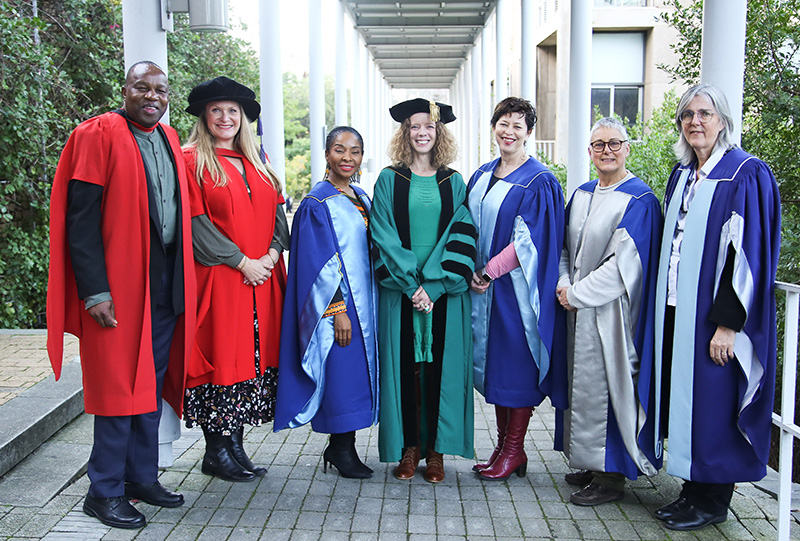
One of only a handful of woman professors in the science faculty, Ackermann also used the platform to talk about another issue close to her heart: the transformation of her discipline and the need for diversity.
Scientific racism
“My discipline has a terrible, terrible history of scientific racism, linked to the colonial search for primitive people. In the late 1800s and early 1900s in particular, people of colour were examined, and their bodies collected after death, specifically to find ways to support well-established Western societal beliefs that they were inferior … especially in their intelligence.
“Importantly for the topic I’m discussing today, the search for human origins at that time was inseparable from the colonially-driven search for ‘primitive’ people.”
“My discipline has a terrible, terrible history of scientific racism, linked to the colonial search for primitive people.”
People of colour all around the world were considered primitive models of human ancestors, literally “less evolved”. Some researchers participated in an international market for Khoisan and other indigenous skeletons, to build a collection of “primitive man” overseas.
“Some scientists like to talk of science as ‘pure’ and separate from society or from ʻidentity politicsʼ. The reality is that my science, driven by my academic ancestors, was literally formed in the service of scientific racism… othering, primitivising and sexualising people of colour.”
The physical legacies continue in the lack of diversity in her discipline and segregated scientific spaces, as well as public perception. Additionally, her discipline has high levels of sexual harassment.
“Field harassment is quite common, and ranges from verbal harassment all the way through to assault. It is a real problem.”
It’s vital to include diversity in the field by nurturing young women scholars to change the patriarchal, colonial narratives in palaeoanthropological research, she said.
“Diverse teams make for better science. A wider range of viewpoints, a wider range of questions being asked and answered, gives us more scientific certainty that the answers we come up with… the narratives we create… accurately reflect what happened.”
 This work is licensed under a Creative Commons Attribution-NoDerivatives 4.0 International License.
This work is licensed under a Creative Commons Attribution-NoDerivatives 4.0 International License.
Please view the republishing articles page for more information.


